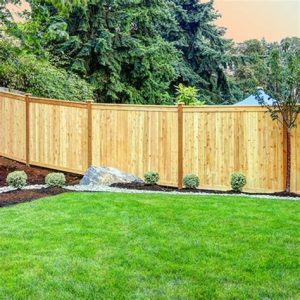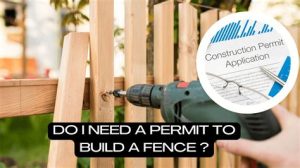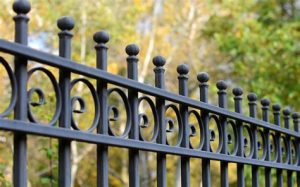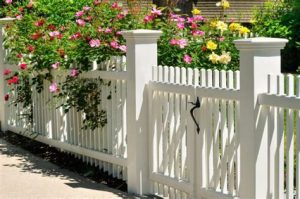As winter approaches, ensuring your property is protected from drifting snow becomes essential. Installing a snow fence can significantly reduce snow accumulation on driveways, walkways, and fields, making your outdoor spaces safer and more accessible. In this comprehensive guide, we will walk you through everything you need to know about how to install a snow fence effectively. From understanding the necessary materials and selecting the ideal location to a detailed step-by-step installation process, we’ve got you covered. Whether you’re a seasoned DIYer or a first-time homeowner, this article will provide you with the tools and knowledge required for successful snow fence installation, ensuring you enjoy a winter season with less hassle and more peace of mind. Let’s delve into the essentials of snow fence installation!
What Do You Need to Install a Snow Fence?
Before embarking on the task of installing a snow fence, it’s crucial to gather the necessary tools and materials to ensure a successful installation. Here are the essential components and equipment what do you need to consider:
- Snow Fence Material: Choose a sturdy material such as plastic mesh or wood that suits your specific requirements.
- Posts: Select durable posts, which can be wooden or metal, to provide stability to the fence.
- Post Driver: This tool is essential for securely placing the posts into the ground.
- Wire or Rope: Used to secure the snow fence to the posts and maintain its tension.
- Measuring Tape: Important for measuring distances accurately to ensure proper installation spacing.
- Stakes: To support the structure and prevent it from collapsing under the weight of accumulating snow.
- Level: Ensures that the fence is installed evenly and straight, which is critical for its effectiveness.
- Safety Gear: Gloves, goggles, and boots should be worn to ensure safety during installation.
By ensuring you have the right materials and tools at hand, you can streamline the process and achieve the most effective results in your snow fence installation. This preparation not only simplifies the task but also enhances the fence’s performance in managing snow accumulation.
Choosing the Right Location for Your Snow Fence Installation
When it comes to effective snow fence installation, selecting the right location is critical for maximizing its efficiency. Proper positioning can significantly enhance your efforts in controlling snow drift. Here are some key considerations to keep in mind:
- Proximity to Wind Direction: Always observe the prevailing wind patterns in your area. Place the snow fence perpendicular to the wind direction, which allows it to intercept drifting snow effectively.
- Distance from the Area to Protect: The ideal distance for planting your snow fence typically ranges from 20 to 50 feet away from the area you want to shield. This distance allows for the optimal collection of drifting snow.
- Terrain Variation: Evaluate the topography of your land. Snow tends to drift more in open spaces with little obstruction. In cases of uneven terrain, you may need to adjust the height and distance of your snow fence accordingly.
- Avoiding Obstacles: Ensure that your snow fence placement isn’t hindered by trees, buildings, or other structural interruptions, which can disrupt its snow-catching capabilities.
- Consider Local Regulations: Before starting your installation, check local zoning laws or guidelines regarding snow fence placement to avoid potential violations.
By taking these factors into account, you’ll enhance the effectiveness of your snow fence, making it a successful defensive measure against drifting snow.
Materials Required for Snow Fence Installation Success
When planning your snow fence installation, gathering the right materials is crucial to ensure a successful setup. Here’s a comprehensive list of essential materials you will need:
- Snow Fence: The primary material necessary for trapping snow and preventing it from drifting onto pathways or roads. You can choose from various types, including plastic or wood, depending on your needs and preferences.
- Posts: Durable posts are required to support the snow fence. Common materials include wood, metal, or composite choices, with wood being the most traditional option.
- Fasteners: Make sure to have adequate fasteners like nails, screws, or ties to secure your snows fence to the posts.
- Wire or String (for temporary installations): If you’re using a temporary snow fence, wire or string can help secure the fence effectively.
- Tools: Basic tools like a post hole digger, hammer, or drill will be needed for installation. If you’re using metal posts, a metal auger may be beneficial.
- Measuring Tape: Accurate measurements are essential for proper installation. Use a measuring tape to determine precise distances between posts and overall fence length.
- Level: A level ensures that your posts are straight, which is vital for the stability of the snow fence.
Having these materials on hand will help streamline the installation process and contribute to the overall effectiveness of your snow fence setup. Remember that selecting quality materials can lead to longer-lasting results and better performance in snow retention.
How to Install a Snow Fence: Step-by-Step Guide
Installing a snow fence is a straightforward process that can greatly enhance your property’s protection against snow drifts. Below is a What Do you need to know to complete this task efficiently:
- Choose Your Location: Select an appropriate spot for the fence, ensuring it is positioned perpendicular to prevailing winds and at least 30 feet from the area you want to protect.
- Gather Your Materials: Refer to the previous section to ensure you have all the necessary materials for the installation.
- Mark the Ground: Use stakes or flags to outline where the fence will be placed. This will provide a visual representation of where to dig and set posts.
- Dig Post Holes: Dig holes for your fence posts at intervals appropriate for your snow fence type (typically about 8-12 feet apart).
- Install the Fence Posts: Place the posts into the holes, ensuring they are vertical and secure. Use concrete or dirt to fill the holes and support the posts.
- Attach the Snow Fence: Once the posts are installed, attach the snow fencing material, ensuring it is taut and well-secured to minimize sagging and improve effectiveness.
- Ensure Proper Height: The top of the fence should be at least 4-5 feet high to effectively reduce snow drifts, as specified in industry guidelines.
- Maintain Your Fence: Regularly check for any damage and perform necessary maintenance to keep your snow fence functioning well throughout the winter.
By following these steps, you can ensure a successful snow fence installation that effectively minimizes snow accumulation around your property, enhancing safety and accessibility during winter months.
What Do You Achieve with Effective Snow Fence Installation?
Installing a snow fence can significantly improve the conditions around your property during winter. The main goal of an effective snow fence installation is to manage snow drift, which can help in various ways:
- What Do you gain in terms of safety? By reducing snow accumulation on roads and driveways, you diminish the risk of accidents caused by ice and heavy snow.
- Enhanced visibility is achieved as snow is directed away from your pathways and entrances, making it safer for pedestrians and vehicles.
- Protection of valuable greenery and landscaping is provided, as snow drifts can bury shrubs and plants, potentially causing damage or suffocation.
- Reducing snow removal efforts is a key benefit; less snow accumulation means less time and expenditure on clearing driveways and walkways.
- Improved accessibility ensures that emergency services and vehicles can navigate your property more effectively, particularly in winter storms.
Overall, an effective snow fence installation not only enhances safety and convenience but also promotes better management of snow around your property, leading to a more pleasant winter experience.
Frequently Asked Questions
What materials are typically used for snow fences?
Snow fences are usually made of wood slats, plastic mesh, or wire, which can effectively disrupt wind flow and snow accumulation.
How high should a snow fence be installed?
A snow fence should typically be between 3 to 4 feet high to effectively deflect snow and create the desired space for accumulation.
What is the ideal distance to place a snow fence from a road or driveway?
The fence should be installed about 30 to 50 feet away from the road or driveway to ensure it effectively captures blowing snow without obstructing traffic.
When is the best time to install a snow fence?
The best time to install a snow fence is in the fall, before the first snowfall, ensuring optimal effectiveness during winter.
How does a snow fence help in snow management?
A snow fence reduces snowdrift formation by creating a barrier that alters wind flow, allowing snow to settle in undesired locations.
Can I build a snow fence on my property without a permit?
It depends on local regulations. Check with your local authorities to determine if a permit is required for building a snow fence on your property.
Are there any maintenance requirements for snow fences?
Yes, snow fences may require periodic checks to ensure their structural integrity and effectiveness, especially after heavy snow or strong winds.




